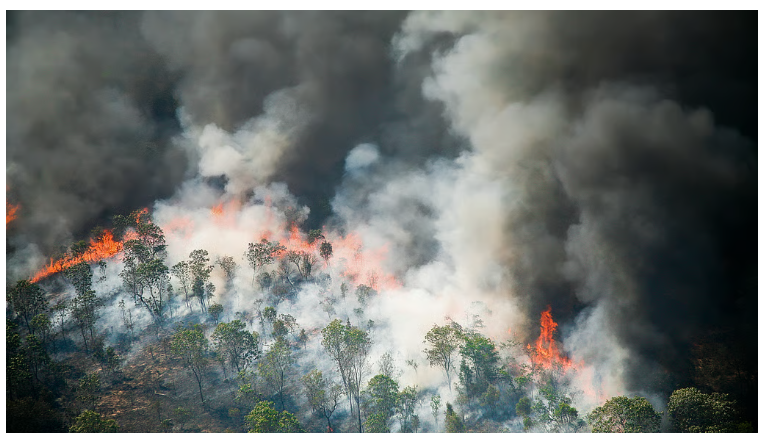Global carbon mitigation policies fail to reflect increasing emissions from forest fires, warns UN University paper

Canada’s record-breaking wildfires last year released nearly three times more carbon than the country’s entire economy — yet such emissions are barely accounted for in climate policy. Forests and peatlands, long considered among the planet’s largest terrestrial carbon sinks, are increasingly becoming ‘super’ carbon emitters due to rising temperatures and the growing frequency and intensity of wildfires, a new policy brief has warned.
The report, published by the United Nations University Institute for Water, Environment and Health, stated that current carbon mitigation frameworks — such as carbon pricing, credit verification, and carbon market initiatives including those under the Paris Agreement — largely failed to account for emissions from wildfires.
Schemes such as the Voluntary Carbon Market (VCM), Reducing Emissions from Deforestation and Forest Degradation, Afforestation, Reforestation and Revegetation, Improved Forest Management and the Verified Carbon Standard (VCS) assume that forests would continue to function as stable carbon sinks.
However, the brief noted that over the past decade, many forests and peatlands had become net carbon sources and heat reservoirs, capable of triggering or worsening wildfires.
Citing instances, it said, “In 2023, Canadian wildfires covering 18.5 million hectares emitted approximately 23 per cent of the global carbon from wildfires, nearly six times Canada’s 20 years’ average.”
These fires released around 2 gigatonnes of carbon dioxide, exceeding far more than the country’s average annual emissions of 670 megatonnes from its main economic sectors.
The paper also cited Siberia’s taiga, where carbon emissions in 2024, the hottest year on record, were the third highest in two decades, following spikes in 2019 and 2020. Amazon wildfires recorded in 2022 recorded highest carbon emissions in 20 years. Meanwhile, in 2023, Australia experienced its most extensive bushfires in more than a decade.
“Such massive carbon emissions are often ignored or underestimated by VCMs, and carbon offset schemes. Accordingly, they fail to adequately account for the dual functionality of forests, mechanically assuming forests as carbon sinks. This issue has led to an overestimation of the role of afforestation solutions to climate change,” the paper noted.
It also challenged the idea that planting more trees would always help capture more carbon. “If forests expand in warming environments, their heat adsorption also increases the risk of fires. In addition, when root zone soil moisture is depleted during droughts, forests do not effectively uptake carbon. Planting more and more trees in such an environment with the purpose of carbon mitigation will likely increase carbon emissions due to future wildfires,” the authors noted.
Pests may further adversely impact the carbon-storing capacity of the forests, especially if compounded by drought.
Calling for urgent policy reform, the paper advocated an adaptive, anticipatory governance approach that accounted for extreme weather, droughts, heatwaves, and future fire risks over a one-way approach that considers that forestation will always increase carbon capture.
It recommended reworking mechanisms like VCMs and VCS to include dynamic climate and ecological conditions in their assessments, thereby preventing unintended consequences.
Rather than focusing solely on forest expansion, carbon policies should assess forests’ hydrological and thermal conditions. Variables such as annual precipitation, soil health, and climate projections must be factored into any carbon mitigation strategy involving trees.
The brief also suggested near real-time satellite monitoring to assess changes in forest environments.
“Satellite observations can identify areas where forests are growing and fuels are accumulating. Such forest environments should be excluded from carbon offset markets and afforestation plans due to potential high emissions in case of future fires. For example, wildfire often occurs in areas where trees flourish, particularly in vulnerable boreal forests, which turn into fire fuels during drought and heatwaves,” it said.
The paper concluded that in the absence of a reformed process, the estimated carbon capture measured from reforestation may not be entirely reliable and can misinform forest management decisions.
Article Credit: downtoearth